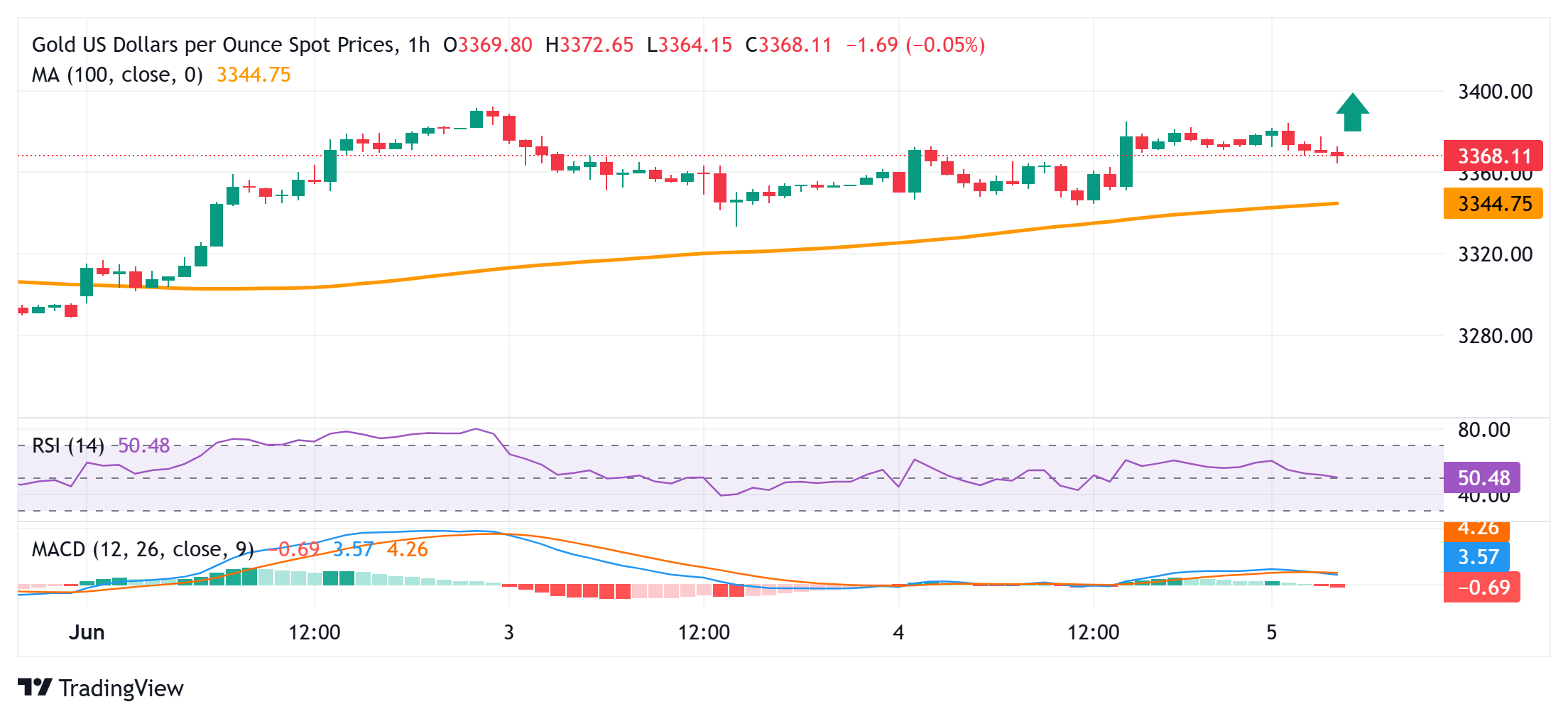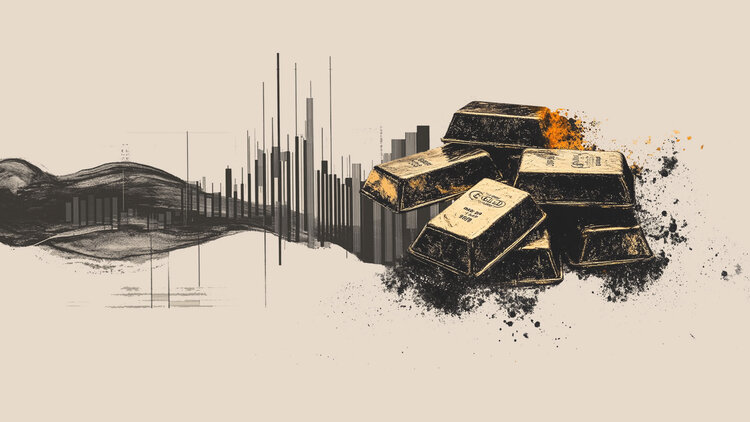- Gold price struggles to capitalize on the previous day’s modest gains amid mixed cues.
- A modest USD uptick weighs on the commodity, though the downside remains limited.
- Fed rate cut bets, US fiscal concerns, geopolitical risks, and trade uncertainties could support the XAU/USD.
Gold price (XAU/USD) attracts fresh sellers in the vicinity of the $3,385 region, or a multi-week high touched on Tuesday and erodes a part of the previous day’s modest gains. The downtick is sponsored by a slight US Dollar (USD) recovery, which tends to undermine demand for the commodity. However, a combination of factors might continue to act as a tailwind for the precious metal ahead of potential talks between US President Donald Trump and Chinese President Xi Jinping.
Investors remain on edge amid persistent geopolitical risks, trade-related uncertainties, and US fiscal concerns, which, in turn, should lend support to the safe-haven Gold price. Moreover, bets that the Federal Reserve (Fed) will lower borrowing costs further in 2025 could limit a meaningful USD appreciation and contribute to limiting losses for the non-yielding yellow metal. This, in turn, warrants some caution for bearish traders and before positioning for any further downfall.
Daily Digest Market Movers: Gold price is pressured by the emergence of some USD buying
- Automatic Data Processing (ADP) reported on Wednesday that US private sector employers added only 37K jobs in May, below consensus estimates and marking the lowest level since March 2023. Adding to this, April’s reading was revised to 60K from 62K reported originally.
- Furthermore, a survey from the Institute for Supply Management (ISM) showed that business activity in the US services sector unexpectedly contracted in May for the first time since June 2024. In fact, the US ISM Services PMI dropped to 49.9 last month from 51.6 in April.
- The rate-sensitive two-year and the benchmark 10-year US Treasury yields fell to the lowest level since May 9 amid bets that the Federal Reserve will cut interest rates in September. Moreover, US President Donald Trump pressed Fed Chair Jerome Powell to lower rates.
- Dovish Fed expectations, along with concerns that the US budget deficit could worsen at a faster pace than expected on the back of Trump’s flagship tax and spending bill, fail to assist the US Dollar in attracting buyers. This lends some support to the non-yielding Gold price.
- The increase in steel and aluminum import tariffs from 25% to 50% came into effect on Wednesday. This comes ahead of the high-stakes call between Trump and Chinese President Xi Jinping and amid renewed fears of a trade war between the world’s two largest economies.
- Trump said that he had spoken again to Russian President Vladimir Putin and that the Kremlin leader vowed to retaliate against the Ukrainian attack Russian bombers. Trump added that a Ukraine ceasefire remained distant, which keeps the geopolitical risk premium in play.
- The US vetoed a United Nations Security Council resolution calling for an immediate, unconditional, and permanent ceasefire in Gaza for the fifth time. Meanwhile, Israeli strikes across Gaza have killed nearly 100 Palestinians in the past 24 hours amid a humanitarian aid blockade.
- Traders now look forward to the release of the usual Weekly Initial Jobless Claims data from the US. Apart from this, speeches from influential FOMC members could provide some impetus in the run-up to the highly-anticipated US Nonfarm Payrolls (NFP) report on Friday.
Gold price bulls need to wait for a move beyond $3,385 hurdle before placing fresh bets

From a technical perspective, this week’s breakout above the $3,324-3,326 barrier was seen as a key trigger for bulls. Moreover, oscillators on daily/hourly charts are holding comfortably in positive territory and suggest that the path of least resistance for the Gold price remains to the upside. However, it will be prudent to wait for some follow-through buying above the $3,385 region, or a multi-week top touched on Tuesday, before positioning for further gains. The XAU/USD pair might then surpass the $3,400 mark and climb further to the $3,433-3,435 region. The momentum could extend further toward the $3,500 neighborhood or the all-time peak set in April.
On the flip side, the $3,355 area could offer immediate support to the Gold price. Any further slide might continue to attract some dip-buyers and is more likely to remain limited near the aforementioned resistance breakpoint, around the $3,326-3,324 area. Some follow-through selling, however, could make the commodity vulnerable to weakening further below the $3,300 mark and testing the $3,286-3,285 horizontal support.
US-China Trade War FAQs
Generally speaking, a trade war is an economic conflict between two or more countries due to extreme protectionism on one end. It implies the creation of trade barriers, such as tariffs, which result in counter-barriers, escalating import costs, and hence the cost of living.
An economic conflict between the United States (US) and China began early in 2018, when President Donald Trump set trade barriers on China, claiming unfair commercial practices and intellectual property theft from the Asian giant. China took retaliatory action, imposing tariffs on multiple US goods, such as automobiles and soybeans. Tensions escalated until the two countries signed the US-China Phase One trade deal in January 2020. The agreement required structural reforms and other changes to China’s economic and trade regime and pretended to restore stability and trust between the two nations. However, the Coronavirus pandemic took the focus out of the conflict. Yet, it is worth mentioning that President Joe Biden, who took office after Trump, kept tariffs in place and even added some additional levies.
The return of Donald Trump to the White House as the 47th US President has sparked a fresh wave of tensions between the two countries. During the 2024 election campaign, Trump pledged to impose 60% tariffs on China once he returned to office, which he did on January 20, 2025. With Trump back, the US-China trade war is meant to resume where it was left, with tit-for-tat policies affecting the global economic landscape amid disruptions in global supply chains, resulting in a reduction in spending, particularly investment, and directly feeding into the Consumer Price Index inflation.

